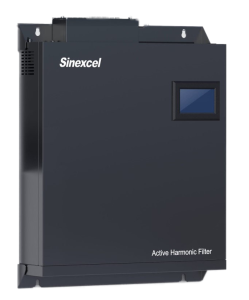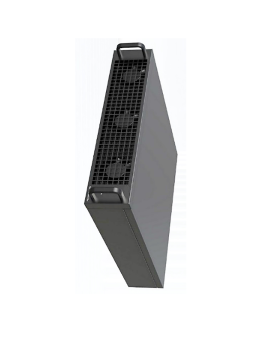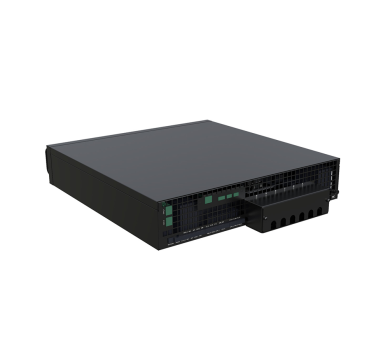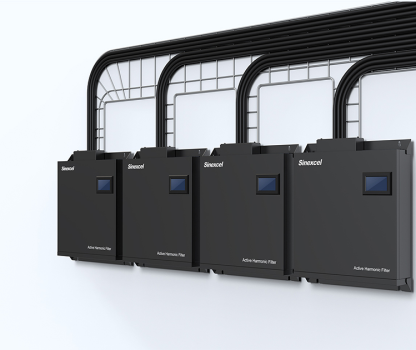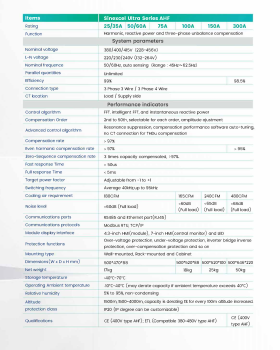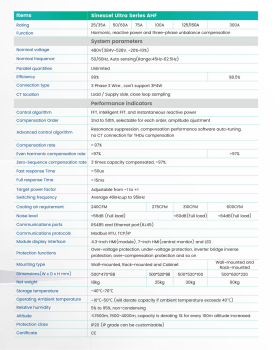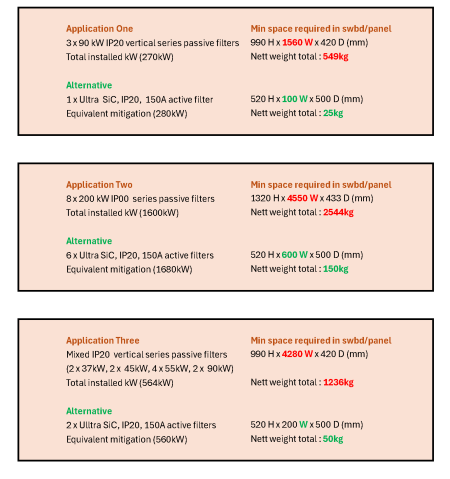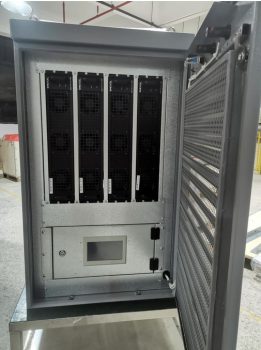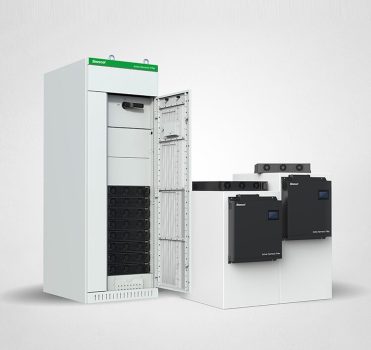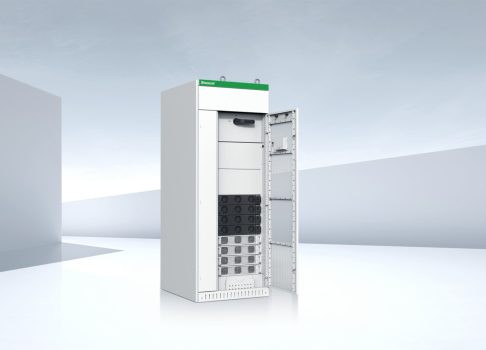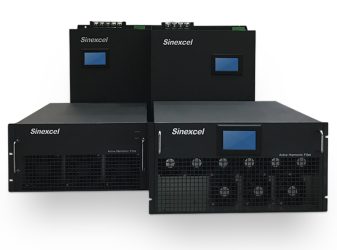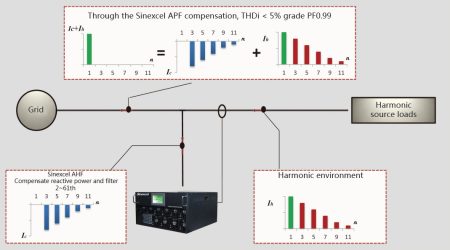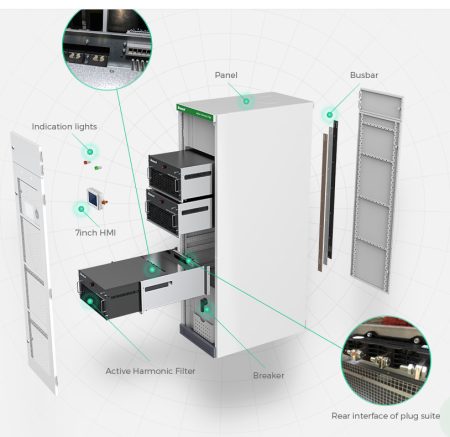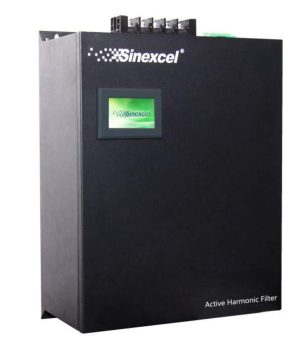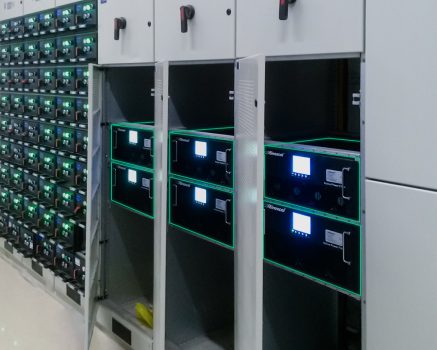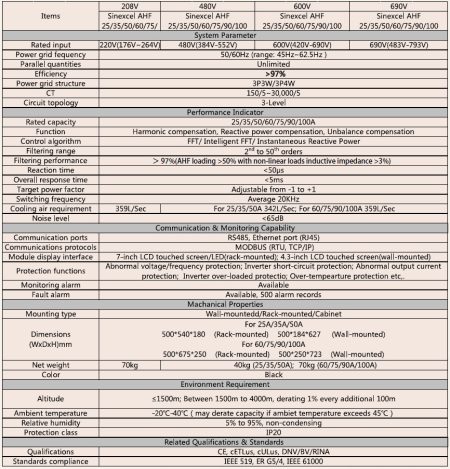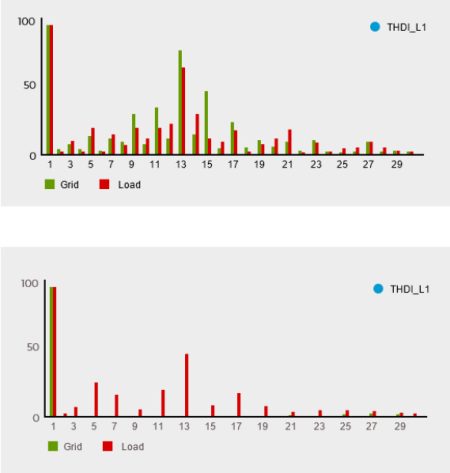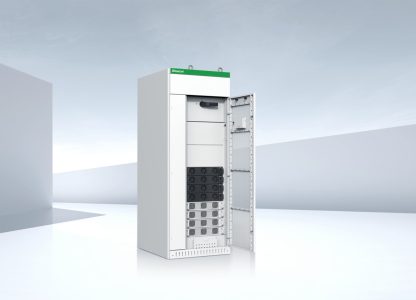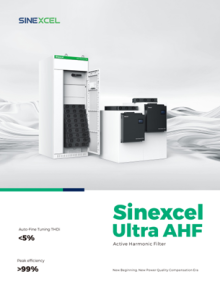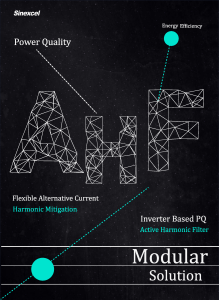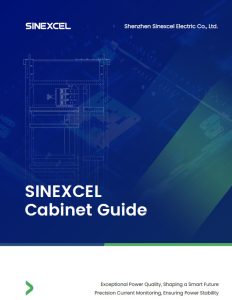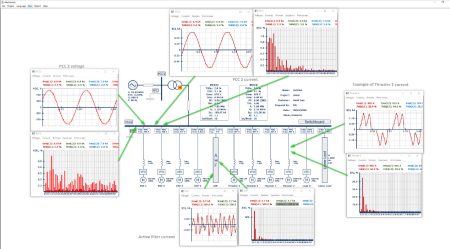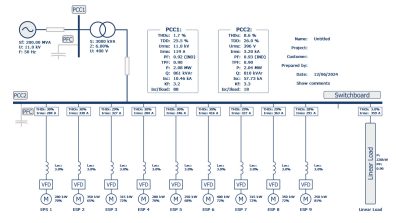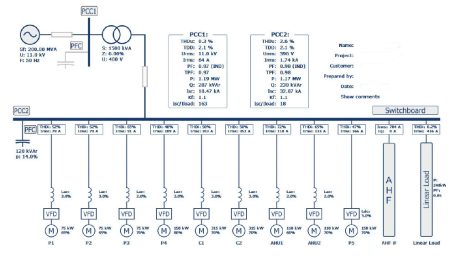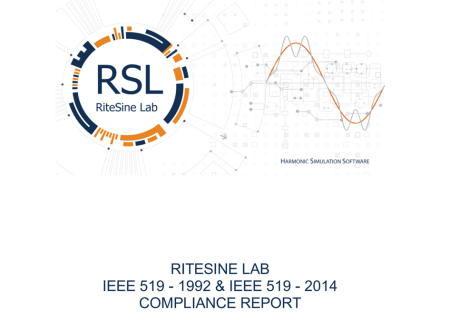Sinexcel Ultra SiC (silicon carbide) range of advanced active harmonic filters are currently available up to 480V (690V shortly). Ultra SiC AHFs provide many unique features, high THDi performance, including “sensorless control” to minimise background THDu, small physical sizes and low cost. Available in IP20, modules from 25A up to 300A (can be paralleled up for higher ratings) and in enclosures up to IP54. The IP20 modules are ideal for installation in E-houses, switchboards, electrical panels, VFD enclosures or any applications where lack of space and cost of the installation may be an issue.
Ultra SiC active filters are ideal, when either conventionally wall/panel mounted or in ‘bookcase design’. Ultra AHF can also be installed in rack mount for high-capacity mitigation applications. A single 150A module can provide <5% THDi mitigation for 280kW of non-linear load, a 300A single filter can mitigate over 500kW. Higher compensation current can be achieved via paralleled modules.
Enclosure options available include IP20 for panel mounting, enclosures, IP23 up to IP54 and 900A maximum per enclosure. Customer enclosures also available. The compensation current capacity can be expanded if additional VFDs, for example are added to the field, thus ensuring a future-proof solution.
Note : Ultra static VAR generator (SVG) modules of same physical design can be mixed with Ultra SiC to also provide electronic displacement power factor correction.
Specifications:
Comparison of Series Passive Filters and Ultra SiC
An example below illustrates a comparison of the required physical space required in an E-house or switchboard for series passive filters, historically the mitigation of choice for ESP VFD ‘at the wellhead’ mitigation and Ultra SiC active filters.
Three examples are provided. The dimensions and weights of the passive filters were taken from a leading European manufacturer’s datasheet. In each case the Ultra SiC filter was mounted as a “bookcase” installation where multiple filters are installed side by side, vertically to minimise space.
Note – series passive filters must be sized to the VFD installed kW where Ultra SiC, NA AHF (and other harmonic active filters are applied) should be dimensioned based on the running load kW.
NA AHF active filters
Ultra SiC active filters currently are only available in voltages to 480V. For voltages from 208V to 600V/690V, (800V for renewable applications), the NA AHF active filter is available in rack or wall mounting.
These three level IGBT active filters have similar features as Ultra SiC AHF but are of different construction and packaging.
Specifications:
Ultra SiC and AHF additional features
– Unique intelligent Fourier technology
Resonance is a serious electrical problem. When a local power system resonates, it will generate harmonic voltages and harmonic currents to dangerously elevated levels across all equipment on the local network.
Since 2017, Sinexcel has utilised specifically designed resonance suppression into their active filter technology via their uniquely Intelligent Fast Fourier Technology and lead the field in resonance suppression technology. This technology ensures stable operation of the system thus avoiding the effects of resonance.
In 2022, after several more years of persistent research and development, Sinexcel’s R&D team launched Resonance Algorithm 2.0. Based on higher levels of resonance suppression, they further improved resonance compensation with a THDi of 5% and output perfect sine waves bringing enhanced power quality for the user.
– Voltage control (aka sensorless control)
Excessive THDu can interfere with monitoring and protection systems and all other equipment including electric motors, especially fixed speed explosion motors where under certain circumstances, these motors may be potentially dangerous.
Ultra and NA AHF active filters both have the following control options :
- Open loop (load sensing with the CTs on the side)
- Closed loop (source sensing with the CTs upstream of the active filter connection)
- Voltage control (where CTs are not required since special control is activated)
Voltage control directly targets the voltage waveform instead of injecting a compensation current solely based on the current measurement and enables sensorless operation without current transformers, often with better results as illustrated below.
Voltage control is a requirement for background distortion mitigation (i.e. the local reduction of harmonic levels fed by medium voltage networks with high THDu). For background voltage distortion mitigation, (i.e. the localised reduction of harmonic levels fed by medium voltage (MV) networks or transformers with high levels of THDu), voltage control is a fundamental requirement.
Hybrid module application
Ultra SiC modules can be installed in dedicated enclosures to 900A or a mix of Ultra SiC and Ultra SVG Power Factor Correction, making it a more economical power quality solution, AHF compensates harmonics, and SVG compensates reactive power at same time.
For information on Ultra SiC SVG (electronic PFC)
Brochures with specifications
RiteSineLab harmonic simulations
RiteSineLab harmonic simulation software simulates 6 pulse VFDs, DC drives, programmable current source devices, PFC and linear loads. For mitigation, both series passive filters and active filters can be modelled. Up to 30 nodes can be accommodated.
Considered in the calculations are :
- Transformers (including those for each node, if applicable)
- Generators (up to 8 off in parallel)
- Transformers per node
- Cables
- Drive reactors (AC and DC bus)
- Linear loads
- Power factor correction
- Background harmonic voltage distortion
- Voltage asymmetry (imbalance)
After a simulation has been run, a report is available based on IEEE‐519‐1992, IEE‐519‐2014 and other harmonic recommendations and rules, the latter mainly for marine and offshore use. In addition, at the source; transformer or generator, switchboard, PFC, discrete drive and linear load nodes a full set of voltage and current waveforms and harmonic spectra are available. The harmonic spectra, although set by default 50th order, can also present harmonics to the 100th.
Sentinel Power Quality has the knowledge and experience
When applied correctly, active filters are an important tool in the harmonic mitigation toolbox. However, no form of harmonic mitigation is perfect. The secret of success is recognising the pros and cons of all types of active and passive mitigation and being able to apply the most appropriate form of mitigation for any given application.
The engineers at Sentinel Power Quality have been involved in applying active and series passive filters since 2003 to standard and demanding applications.
Contact us with your application details and let us assist you.

